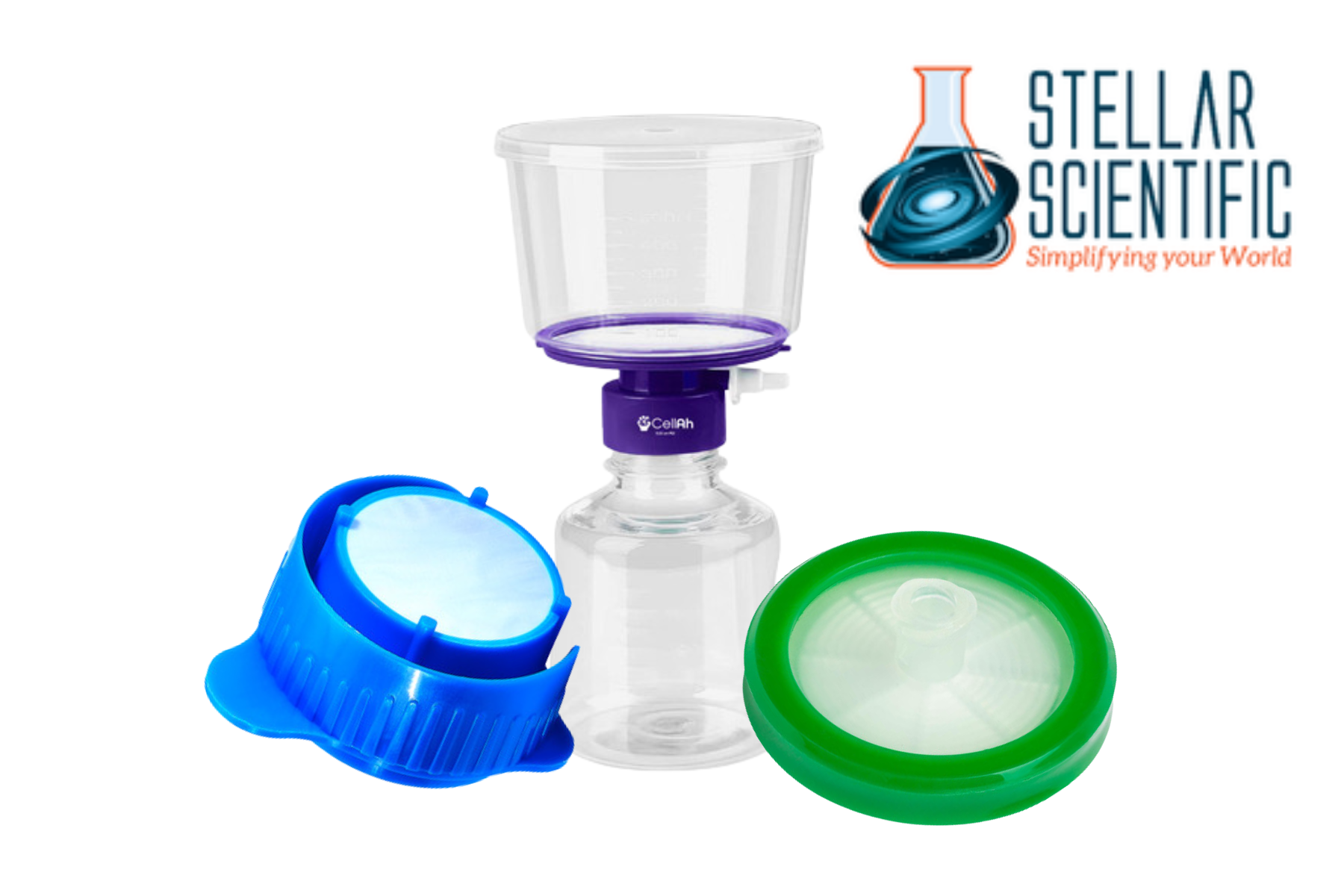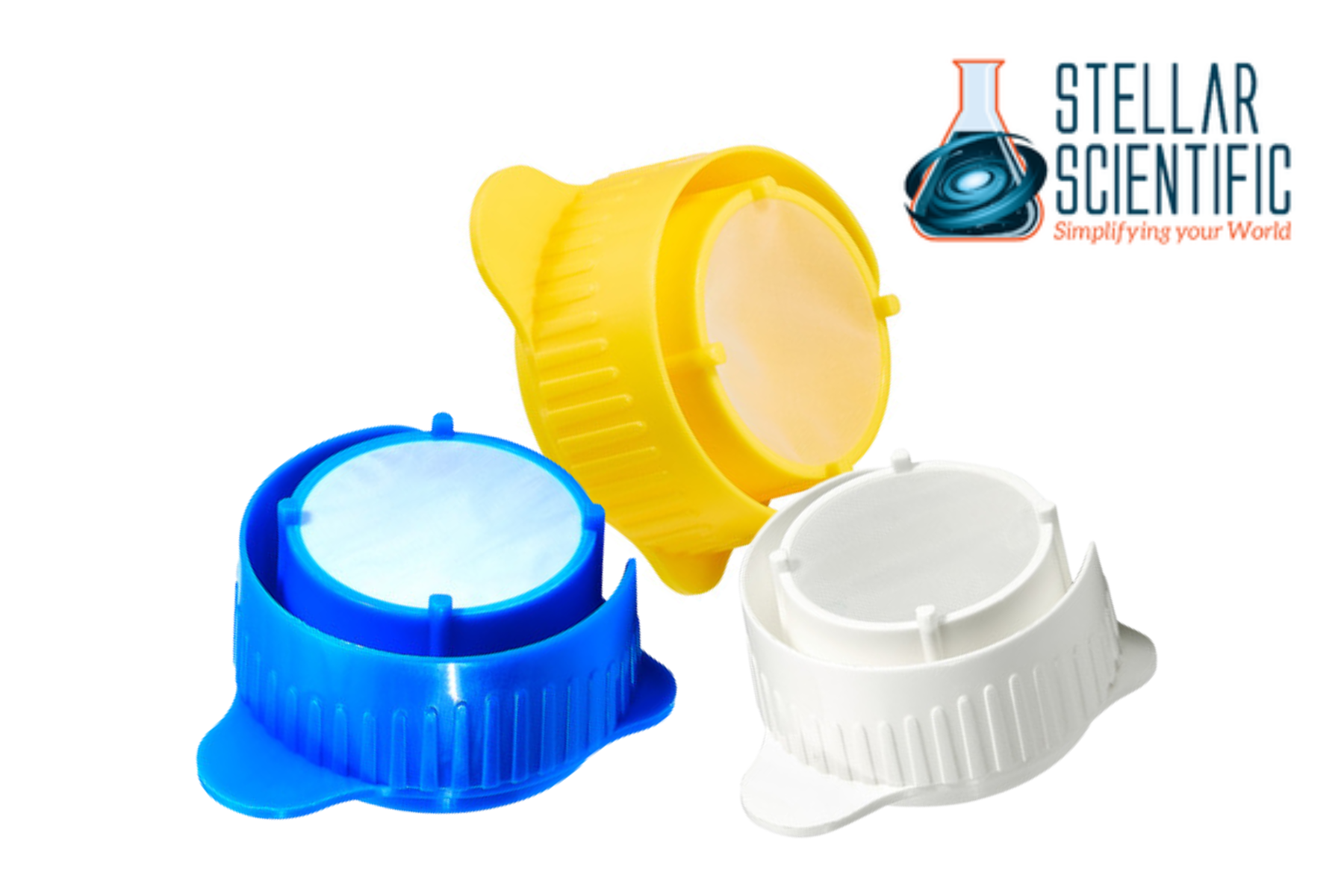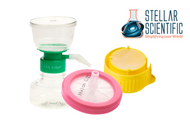Keep It Clear: Cell Filtration That Works
17th Jul 2025
In any life sciences lab, sample clarity is more than just a matter of visibility; it directly impacts the quality and reproducibility of results. From tissue culture and flow cytometry to molecular biology and sample prep, effective cell filtration is critical to eliminating debris, clumps, and unwanted particulates that can interfere with downstream processes.
Cell filters are specially designed to remove large particles and cell aggregates while maintaining the viability and integrity of your target cells. When used properly, they enhance sample quality, reduce variability, and help prevent damage to sensitive instruments such as flow cytometers, microfluidic systems, or automated cell counters.
What Is Cell Filtration?
Cell filtration is the process of passing a cell suspension or tissue digest through a filter membrane with defined pore sizes to remove unwanted particulates. These filters, often referred to as cell strainers, come in various mesh sizes (typically 40 µm, 70 µm, or 100 µm) and are used to ensure a uniform, single-cell suspension.
The process is commonly used prior to:
- Flow cytometry analysis
- Cell sorting or counting
- Nucleic acid extraction
- Tissue culture
- Single-cell sequencing
Clumps and debris not only lead to inconsistent results but can also clog instruments and compromise data quality. Effective cell filtration keeps your workflow smooth and your results accurate.

How Cell Filters Work
Cell strainers are typically made from durable, sterile, medical-grade plastic with a mesh or membrane at the bottom. This mesh allows only cells below a certain size to pass through, filtering out larger debris or aggregates. Some designs include funnel tops for easy pouring and snap-in compatibility with standard 50 mL conical tubes.
Gravity flow, gentle pipetting, or low-speed centrifugation can be used to move the sample through the filter. The resulting cell suspension is cleaner, more uniform, and ready for downstream applications.
Benefits of Using High-Quality Cell Filters
1. Improved Sample Clarity
By eliminating clumps and debris, cell filters provide a cleaner sample, which is essential for accurate flow cytometry, imaging, and sequencing. Uniform cell suspensions also promote even growth in tissue cultures and consistent response to experimental treatments.
2. Protection for Instruments
Clogged flow cytometers, pipettes, or microfluidic channels can result in downtime and costly repairs. Using a media filtration system ensures only appropriately sized particles reach these sensitive systems, preventing malfunctions and reducing maintenance needs.
3. Better Experimental Reproducibility
Clean, consistent samples reduce variability in your data, which is especially important for applications like single-cell RNA sequencing or high-throughput screening. Filtering improves the likelihood that every cell behaves similarly under experimental conditions.
4. Time and Cost Efficiency
Pre-filtering samples reduces troubleshooting time and reruns caused by poor sample quality. Additionally, fewer clogs and equipment failures translate to lower repair and replacement costs in the long term.
Choosing the Right Cell Filter
Not all cell filters are the same. Choosing the appropriate filter for your application can significantly affect the outcome of your experiment.
Pore Size
The pore size determines what particles are removed:
- 100 µm: Ideal for removing large tissue clumps or aggregates from digests.
- 70 µm: Standard choice for most cell suspensions and tissue culture applications.
- 40 µm: Best for fine filtration in single-cell analysis or flow cytometry.
For applications requiring extremely pure, single-cell suspensions, such as FACS or microfluidics, a 40 µm filter is typically recommended.
Filter Format
Filters come in several designs:
- Snap-in strainers: Designed to fit securely into 50 mL conical tubes.
- Capsule filters: Used for sterile filtration of media and reagents.
- Syringe filters: Handy for small-volume sample filtration.
For cell suspensions, snap-in or mesh-bottom filters are most commonly used. These formats ensure minimal cell loss and easy handling.
Sterility and Material
Always use sterile filters for cell culture or clinical applications to avoid contamination. Filtering cell culture media made from materials like nylon, polypropylene, or polyethylene is chemically resistant and biocompatible, preserving cell viability throughout the process.
Throughput Needs
Consider how many samples you process daily. For high-throughput labs, disposable, pre-sterilized filters that are ready to use out of the package can save valuable time and reduce contamination risks.

Best Practices for Effective Cell Filtration
To ensure your filtration process is both efficient and gentle on your samples, follow these tips:
Use Proper Technique
Avoid forcing the sample through the filter with excessive pressure, which can damage fragile cells. Instead, use gentle pipetting or allow gravity to guide the flow. If needed, a short, low-speed centrifugation can help move the suspension through more quickly without harming the cells.
Pre-wet the Filter
Wetting the filter with media or buffer before adding your sample can help reduce cell adhesion to the mesh and improve recovery rates.
Match Pore Size to Application
Use the smallest pore size compatible with your cell type and experimental goal. Using too large a mesh may allow aggregates to pass through, while using too small may trap target cells.
Minimize Sample Volume per Filter
Overloading the filter can clog the mesh and lead to inconsistent filtration. For best results, process smaller volumes or use multiple filters to divide a large sample.
Work Quickly, But Carefully
Prolonged exposure to open air increases the risk of contamination. Have your materials prepped in advance and work in a sterile environment, especially when preparing cells for culture or downstream molecular assays.
Applications That Rely on Clear Cell Suspensions
Many modern biological and diagnostic techniques require finely filtered cell suspensions:
Flow Cytometry
Cell clumps and debris interfere with cytometer function and lead to inaccurate data. Proper filtration ensures single-cell flow and clearer results.
Single-Cell Sequencing
For transcriptomic or genomic analysis, having a pure, single-cell suspension is essential. Even small clumps can skew library construction and data interpretation.
Primary Cell Culture
When isolating primary cells from tissues, filtration removes fibrous material and improves culture viability. It also helps ensure even cell distribution across wells or flasks.
Immunostaining
Antibody access is improved in clean, single-cell suspensions. Clumps may shield some cells from antibody binding, skewing results.
Supporting Reliable, High-Quality Results
Whether you're running high-throughput analyses or setting up a delicate tissue culture, filtering your samples properly is a small step that yields major benefits. Clean cell suspensions improve data quality, protect your equipment, and ensure your experiments are both efficient and reproducible.
As techniques like flow cytometry, single-cell sequencing, and automated cell counting become increasingly standard in research and clinical diagnostics, the role of effective cell culture media filtration continues to grow in importance. Using the right tools designed for precision and ease can make all the difference in your outcomes.
About Stellar Scientific
At Stellar Scientific, we provide researchers with high-quality lab supplies that support accurate, safe, and efficient workflows. Our selection of cell filters, strainers, and consumables is curated to meet the demands of modern molecular and cellular biology labs. We focus on offering reliable, competitively priced products backed by responsive service and fast shipping.
Whether you're preparing samples for flow cytometry, culturing cells, or conducting single-cell analysis, you’ll find trusted tools that fit seamlessly into your protocols.

